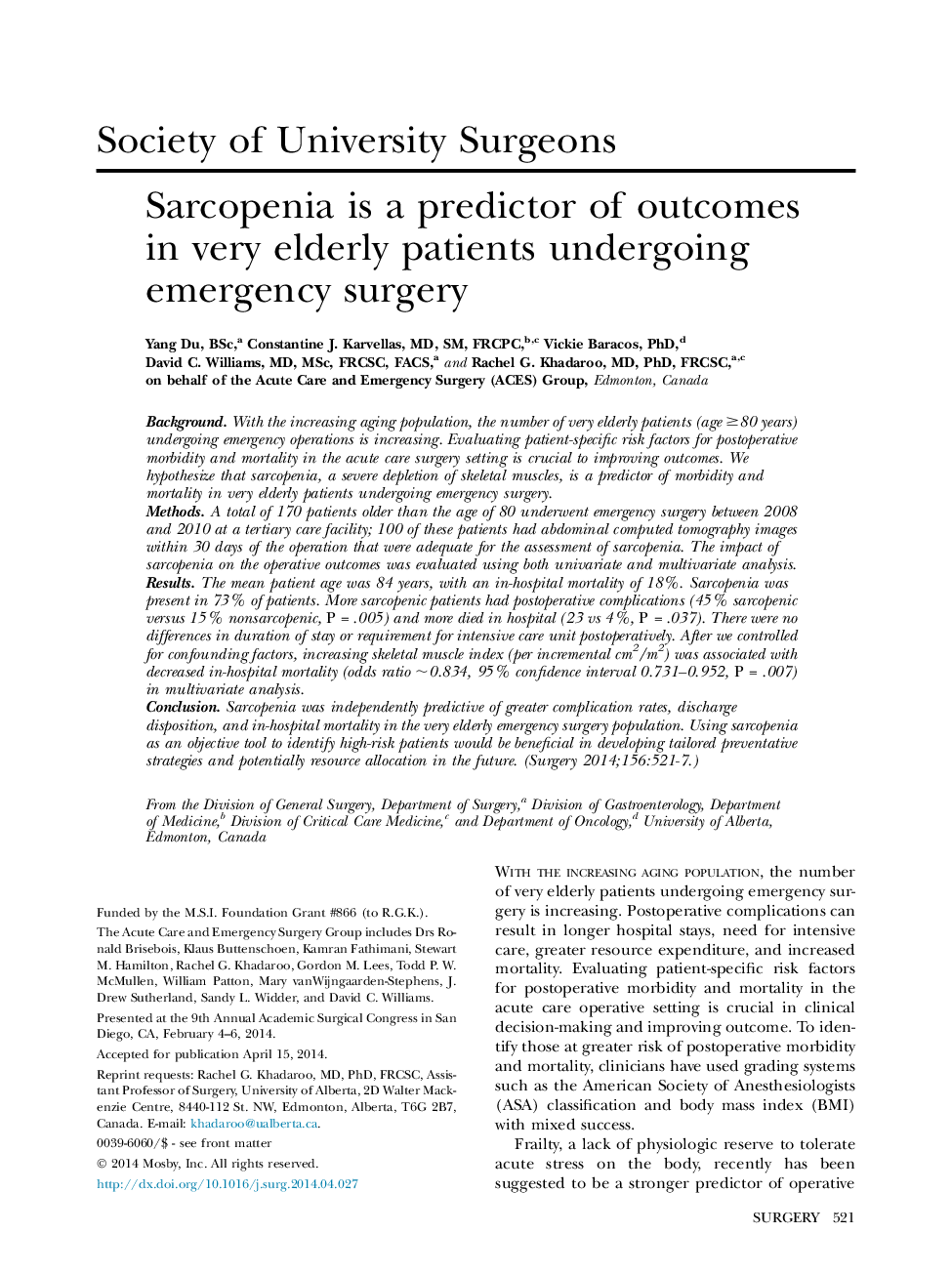| کد مقاله | کد نشریه | سال انتشار | مقاله انگلیسی | نسخه تمام متن |
|---|---|---|---|---|
| 4307120 | 1289238 | 2014 | 7 صفحه PDF | دانلود رایگان |
BackgroundWith the increasing aging population, the number of very elderly patients (age ≥80 years) undergoing emergency operations is increasing. Evaluating patient-specific risk factors for postoperative morbidity and mortality in the acute care surgery setting is crucial to improving outcomes. We hypothesize that sarcopenia, a severe depletion of skeletal muscles, is a predictor of morbidity and mortality in very elderly patients undergoing emergency surgery.MethodsA total of 170 patients older than the age of 80 underwent emergency surgery between 2008 and 2010 at a tertiary care facility; 100 of these patients had abdominal computed tomography images within 30 days of the operation that were adequate for the assessment of sarcopenia. The impact of sarcopenia on the operative outcomes was evaluated using both univariate and multivariate analysis.ResultsThe mean patient age was 84 years, with an in-hospital mortality of 18%. Sarcopenia was present in 73% of patients. More sarcopenic patients had postoperative complications (45% sarcopenic versus 15% nonsarcopenic, P = .005) and more died in hospital (23 vs 4%, P = .037). There were no differences in duration of stay or requirement for intensive care unit postoperatively. After we controlled for confounding factors, increasing skeletal muscle index (per incremental cm2/m2) was associated with decreased in-hospital mortality (odds ratio ∼0.834, 95% confidence interval 0.731–0.952, P = .007) in multivariate analysis.ConclusionSarcopenia was independently predictive of greater complication rates, discharge disposition, and in-hospital mortality in the very elderly emergency surgery population. Using sarcopenia as an objective tool to identify high-risk patients would be beneficial in developing tailored preventative strategies and potentially resource allocation in the future.
Journal: Surgery - Volume 156, Issue 3, September 2014, Pages 521–527
